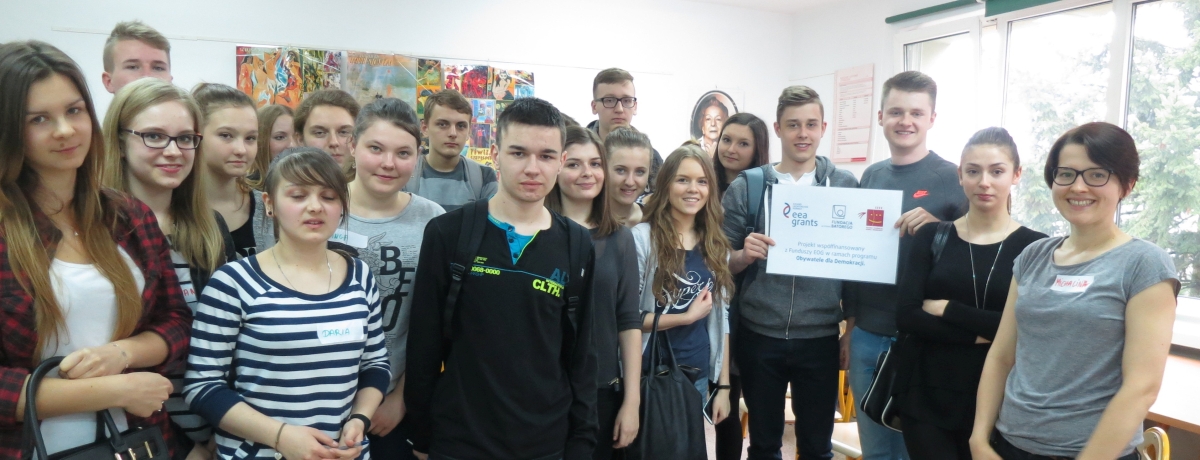| 2015 |
Pajęczno
Henryk Sienkiewicz School Complex


| 2015 |
The synagogue used to stand at 17, Zdrojowa Street. It was built in the 19th century, during the war the Germans transformed it into a carpentry workshop. The walls of the building did not suffer damage during the occupation, therefore after the war a movie theatre “Świteź” was located there. It operates till today. Kilińskiego, Częstochowska, Kopernika, Świerczewskiego Streets were the ghetto area. In September 1939, more than 1 000 Jews lived in Pajęczno. In November 1940 the ghetto was set up in the town. Jews were obliged to wear bands with the Star of David, their shops and workshops were ceased. Mr. Mieczysław Dłubak remembers his Jewish classmates, he also recalls how he smuggled food to the ghetto risking his life. Now the Church of Assumption of the Virgin Mary.
It is here that in 1943 more than 2 000 people were rounded up, before being transported to a death camp. Jews spent three days locked in the church in terrible conditions and every time someone tried to escape, he or she was immediately shot with a gun. Hanna Krall describes it in her story: “First they were locked in a church. The church had been known for centuries because a miraculous painting was hang there. Virgin Mary with a Child. The first miracle of the Mother of God concerned a child from Pajęczno. Later, she healed the sick, freed religious soldiers from pagan imprisonment, recovered sight to the blind, and speech to the mute. During the war, the parish priest and the curate were deported to Dachau, and the church was transformed into a prison. And in one prison there were Jews destined to death and the Mother with a Child.”
Students end the walking tour at the park. Martyna sings “Miasteczko Belz” (Main Sztetele Belz) and “Rebecca”, and the invited guests and students watch an exhibition of photographs of pre-war Pajęczno. Can they recognize their town on these old black and white photographs?
“After seeing the photos I realized that the history of our town is so diverse and that different people lived here together!”, said Mrs. Helena. “I have lived in Pajęczno for 30 years and only today, thanks to my participation in this walking tour, I found out that there was a ghetto in Pajęczno”, adds Mrs. Mariola. “I would like the territory of the Jewish cemetery to be marked. Maybe it will be possible thanks to the efforts of these young people!”, wished Mr. Krzysztof, a resident of Pajęczno.
The walking tour in the footsteps of Jews of Pajęczno was a final project of the high-schoolers from Pajęczno who participated in the School of Dialogue program. The School of Dialogue workshops created an opportunity for discussion, even for the first time, about the Jewish culture and their presence of Jews in Poland before the war. While working on the project, the workshops participants met with the oldest residents of Pajęczno – Mr. Krzysztof Straus, local historian, and Mr. Mieczysław Dłubak, retired school principal.
Apart from the walking tour, the students who participated in the School of Dialogue program also organized an exhibition at school and made a film.
We got so much from this project – not only we learned about the Jewish history and culture, and found out how the life in Pajęczno looked like before the war, but we also met new people, fellow students who also participated in the program and people we interviewed. We recommend School of Dialogue!
Workshops participant

School:
Henryk Sienkiewicz School Complex
Students:
1st and 2nd year students
Teacher:
Bożena Szczerkowska
Expert:
Mieczysław Dłubak
Educators:
Anna Geller, Michalina Laskowska
In appreciation to the Conference on Jewish Material Claims Against Germany (Claims Conference) for supporting this educational program. Through recovering the assets of the victims of the Holocaust, the Claims Conference enables organizations around the world to provide education about the Shoah and to preserve the memory of those who perished.

Program co-financed from the funds granted by Citizens for Democracy program, financed through the EEA grants.

In appreciation to Friends of the Forum for supporting the School of Dialogue educational program.
